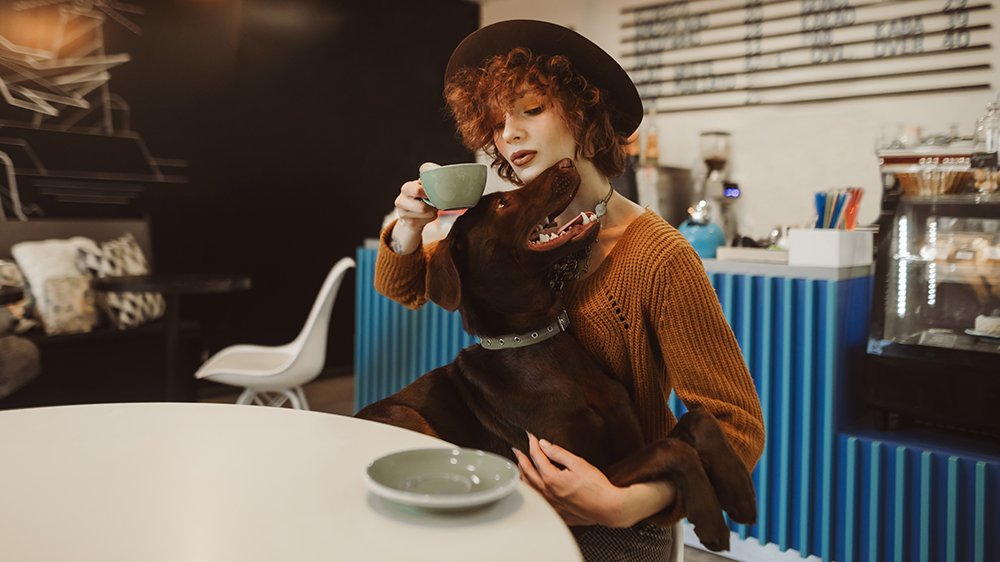
By Adrian Johansen, Contributor
Pets and restaurants have not often been considered a good match. Indeed, for a long time, most eateries have restricted the presence of consumers’ furry companions to registered service animals. For the most part, this has been due to perceptions of uncleanliness or concerns about animal behavior on the premises.
Recently, however, there has been a push toward more restaurants taking a pet-friendly approach to operations. Some have slowly started to relax rules, allowing emotional-support animals to accompany diners. Others have chosen to fully embrace the presence of pets as a positive part of the eating experience, providing services for pets as well as their human companions.
It’s worth taking a closer look at the issue. What are the pluses and drawbacks of embracing a pet-friendly environment? What considerations should you make?
The Benefits of a Pet-friendly Restaurant
In various ways, the switch to making your restaurant a pet-friendly environment will require investment. As such, it’s important to get an idea of how it can be a direct benefit to your business.
Some of the primary positives include:
Marketing Boost

The restaurant industry is a competitive landscape. As such, you need to make certain yours stands out as a better choice than other local eateries. Becoming a pet-friendly restaurant can be a useful marketing tool here.
First, nearly 57% of American households are pet owners, and pet-friendliness allows you to show how your business serves the needs of your guests’ family – all of the family. Perhaps most importantly, though, is the fact that animal content is among the most popular and widely shared on social media. Being able to post images of pets in your restaurant on your Instagram account is valuable. It also encourages customers to tag you in their own social media posts featuring their pets at your eatery, generating wider reach and engagement.
Morale Boost

The atmosphere is a vital component of a successful restaurant. The environment you offer greatly affects the overall experience of your diners and your staff. The presence of pets in any workplace is considered to be a significant morale boost. Friendly dogs and cats reduce stress levels, get people talking to one another, and create surroundings people want to be a part of.
Whether you feature animals all the time — like the growing number of cat cafes — or are inviting guests to bring their own pets, animals tend to help to make everyone’s day a little better. Customers and staff alike will take this pleasant experience away with them, keen to return over again.
The Challenges of a Pet-friendly Restaurant
As with any business decision, there are downsides to match the positives. However, these shouldn’t necessarily be considered deal-breakers that stop you from proceeding. Rather, knowing the challenges can better help you to understand whether and how you can counter them.
Some of the primary cons to a pet-friendly restaurant include:
Cleanliness

A high level of sanitation is vital for any restaurant. One of the big concerns with pet-friendliness is it can expose your business to elements that could see you inadvertently breaching your local health department’s standards of cleanliness.
Pets can cause toilet-related accidents and produce smells not conducive to what some customers consider to be a pleasant eating experience. You can have all the great marketing ideas in the world, but negative reviews about sanitation can see your restaurant become a ghost town. You may need to take on additional staff and provide training to keep on top of the necessary sanitation duties where pets are involved.
Logistics

It can be easy to overlook practical difficulties involved with embracing pet-friendliness. You need to consider whether your restaurant space is suitable for animals — places for them to eat and a designated area for them to go to the toilet. Some of your guests may have allergies to pets, so you need to review how you would handle the situation in a way that keeps everyone involved safe and satisfied.
Remember, the presence of more than one animal on the premises could also lead to disruption; fighting, playing, and excessive noise. As such, you need to review whether you would have limitations on numbers, sizes, and even species of a pet on the property at any given time.
Finding Balance

If you’re planning on embracing a pet-friendly atmosphere, it’s clear your restaurant can’t just become a free-for-all for pets. At the same time, it’s difficult to have a positive environment for animals if you have too many limitations on their presence and behavior. Your success can come down to how you balance welcoming animals while also setting boundaries.
Firstly, you need to be clear in your mind what is and is not acceptable for your establishment. Even when you have hard-and-fast rules limiting some species, you should formalize what your exceptions to this may be — there will sometimes be unexpected circumstances requiring leniency.
For instance, there is a belief COVID-19 may result in another pandemic, but this one is related to a wave of grief and anxiety many people aren’t prepared for. This is likely to result in more people adopting therapeutic solutions to maintain their mental health. A growing trend in this regard is the presence of support animals. You need to make certain the boundaries you set are flexible enough to allow those who cope through the presence of otherwise excluded species to have equal access.
Perhaps most importantly, balance requires the input of your patrons. Allowing pets into your restaurant doesn’t absolve owners of responsibility for behavior. As such, it can be wise to communicate to patrons that your policy is a collaboration. You are providing certain amenities, but owners are also required to contribute — this could be through behavioral standards or even having liability and pet health insurance.
Welcome their pets into your premises but also set clear expectations.
Conclusion
Pet-friendly restaurants are becoming a more common presence. There are some clear morale and marketing advantages, but these are can be offset by potential difficulties surrounding cleanliness and logistics. It’s a difficult situation to get right, but with a commitment to maintaining a balance — about your boundaries and your relationships with customers — you can make a positive start.






